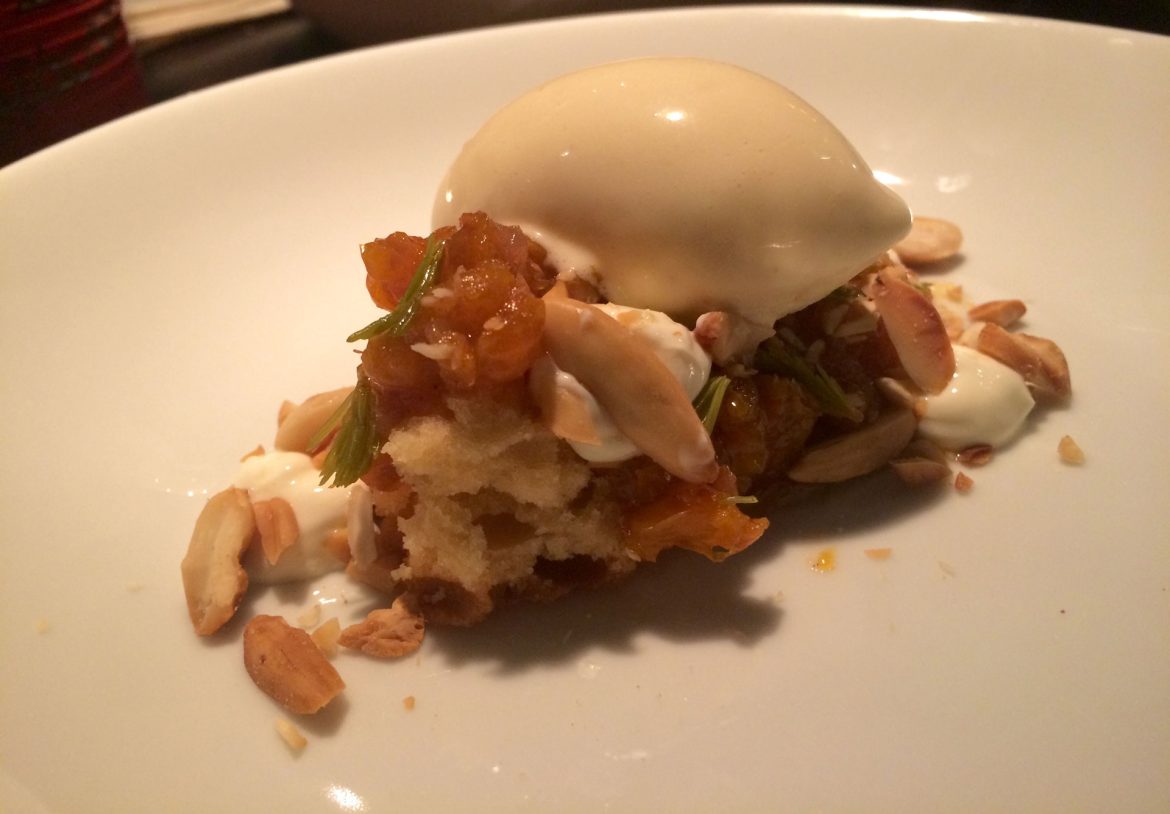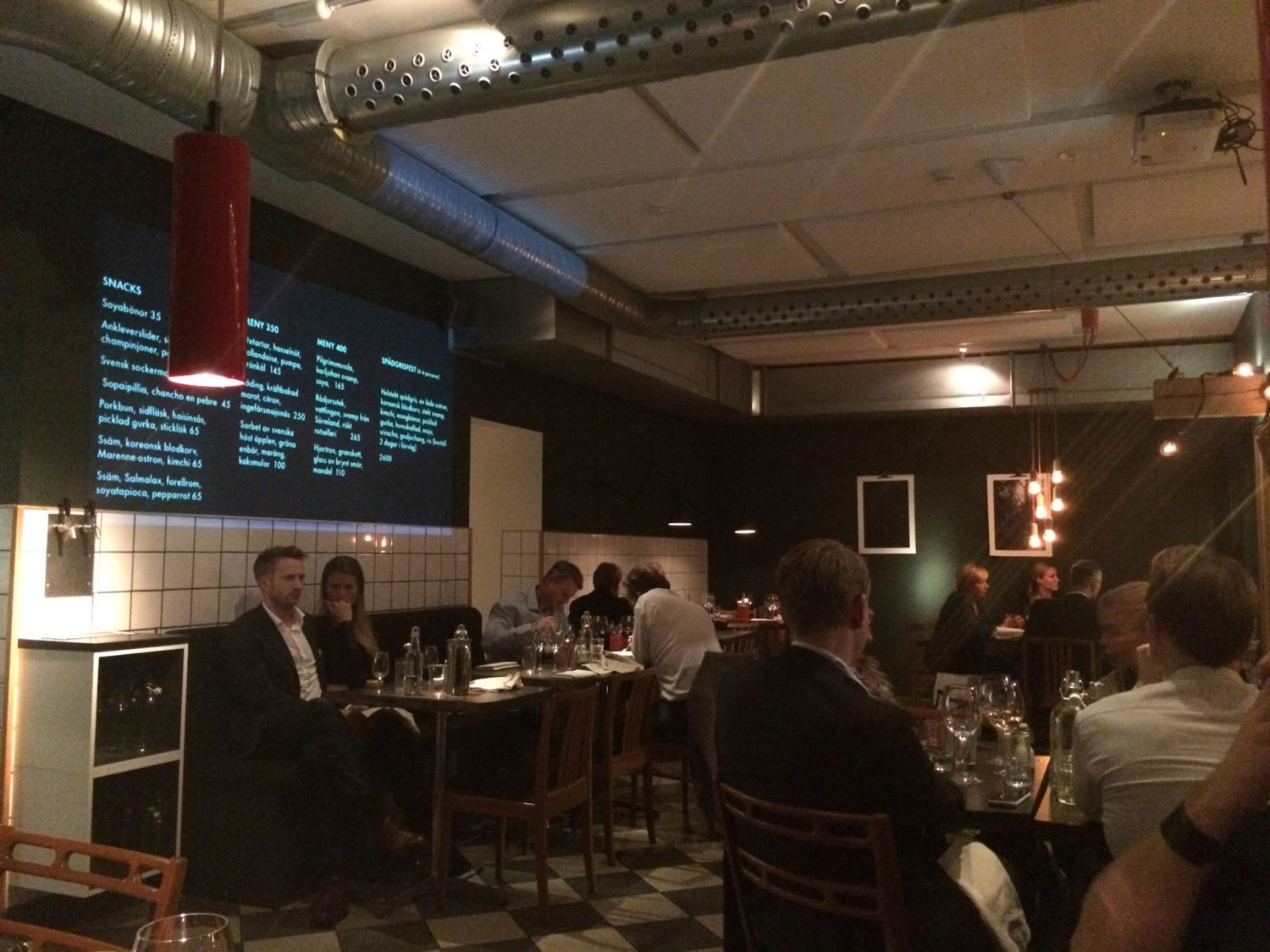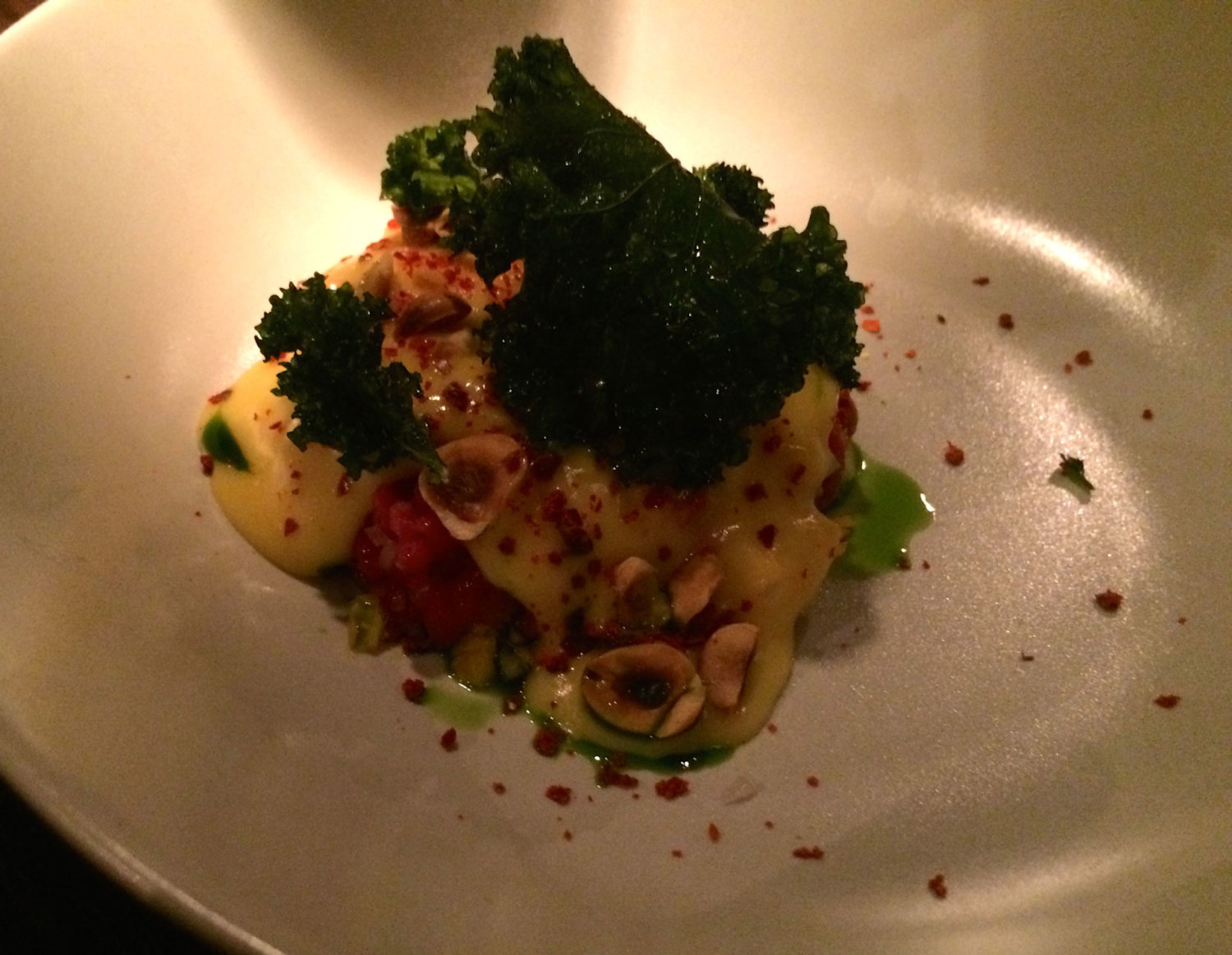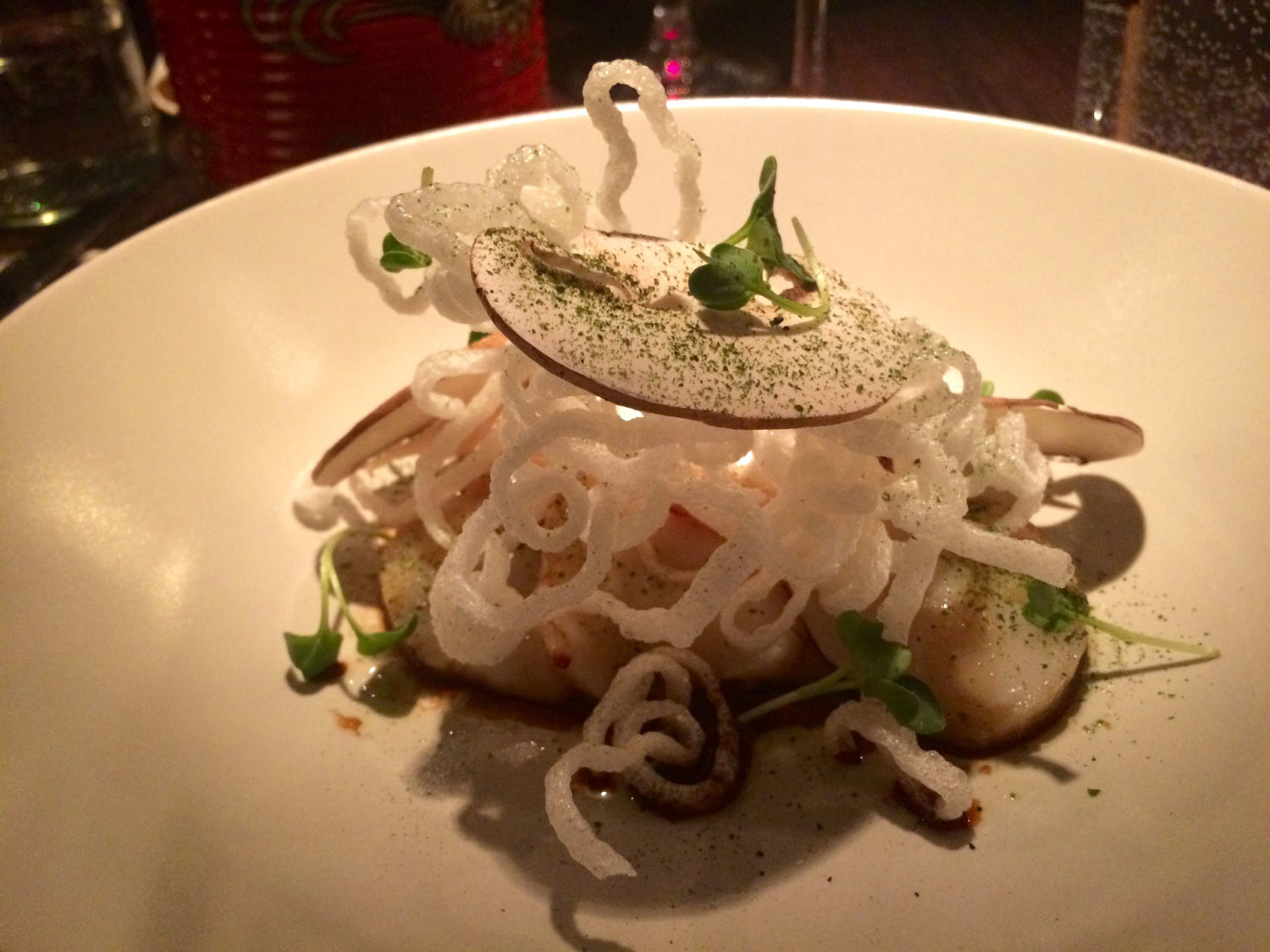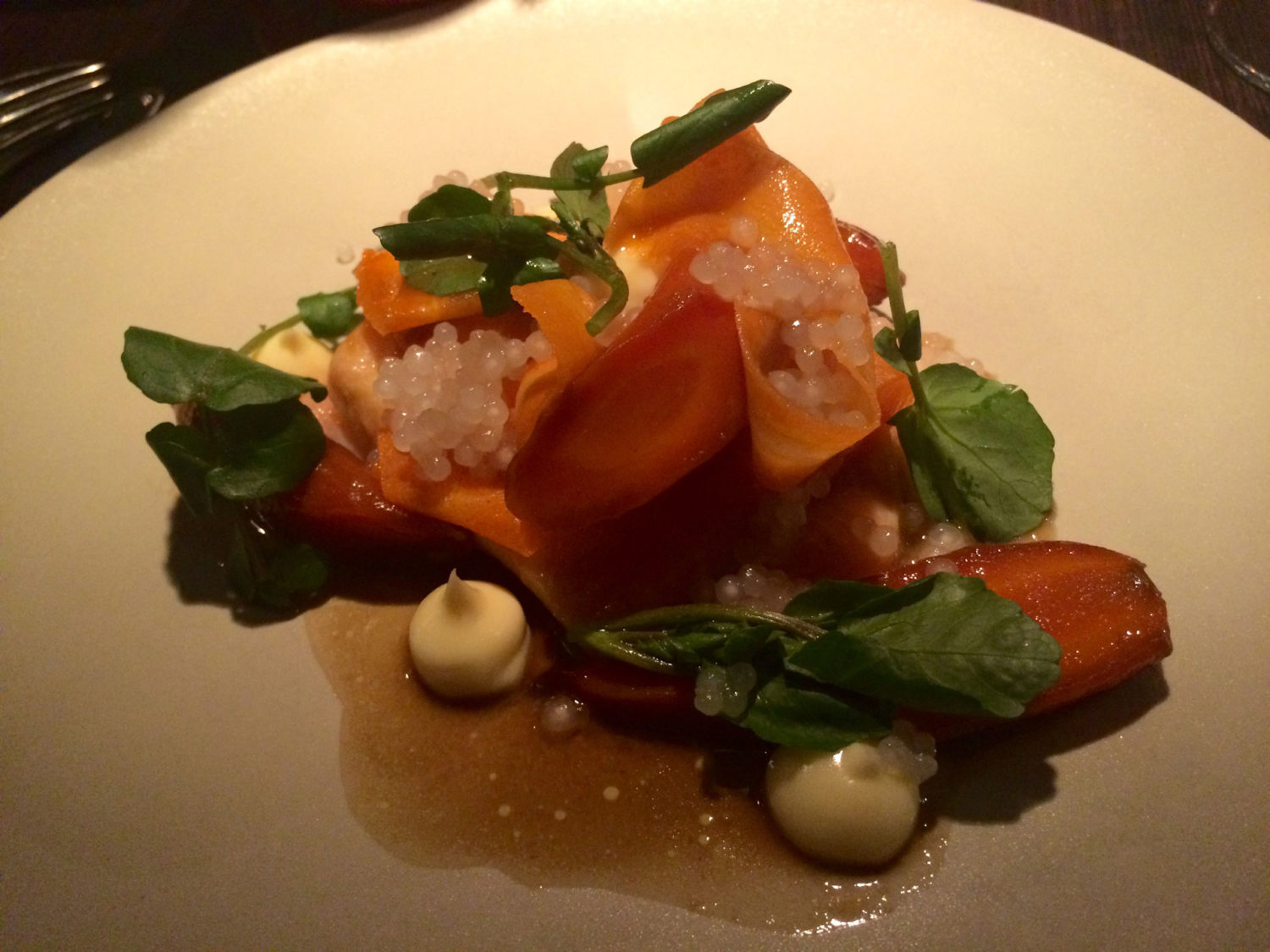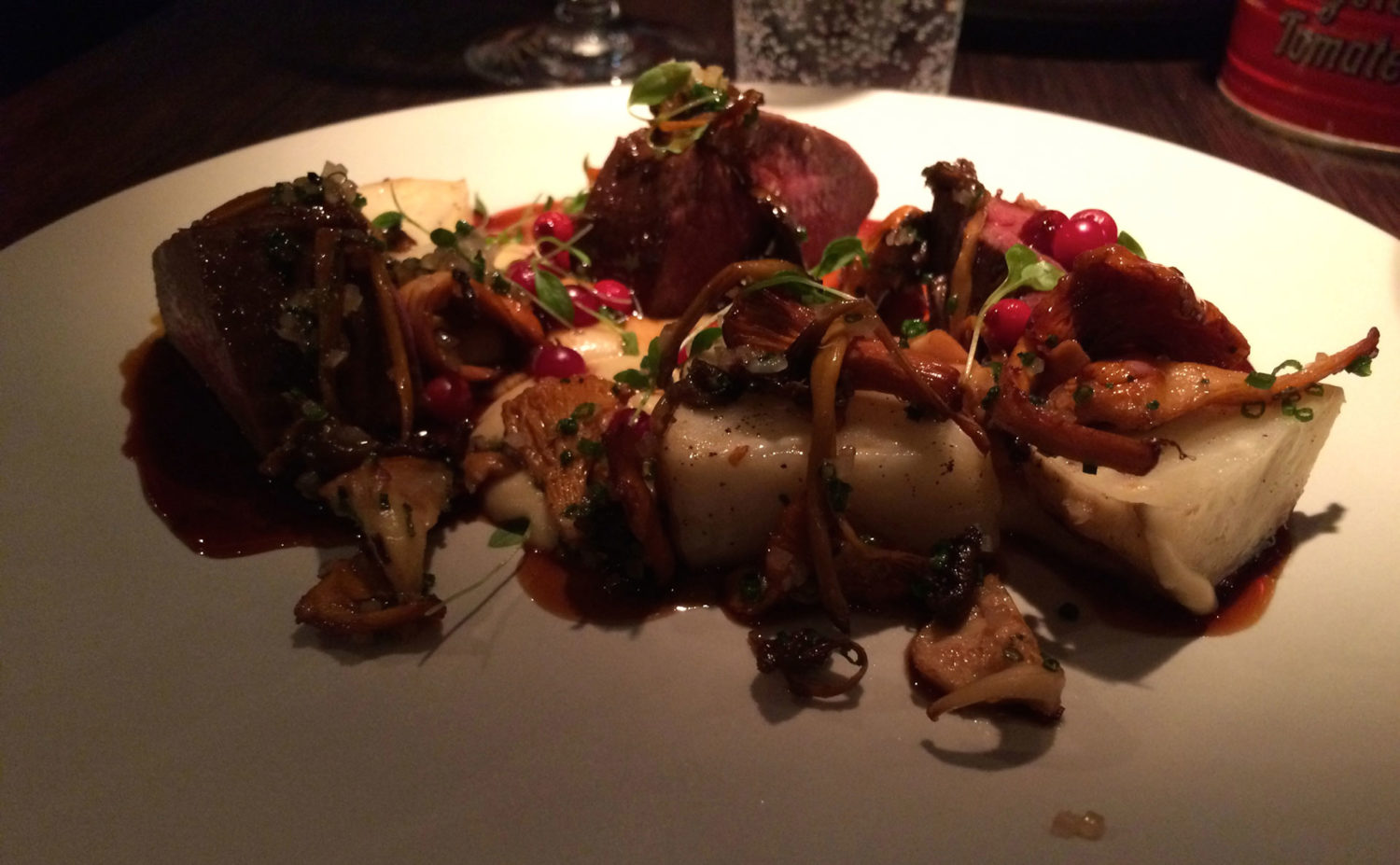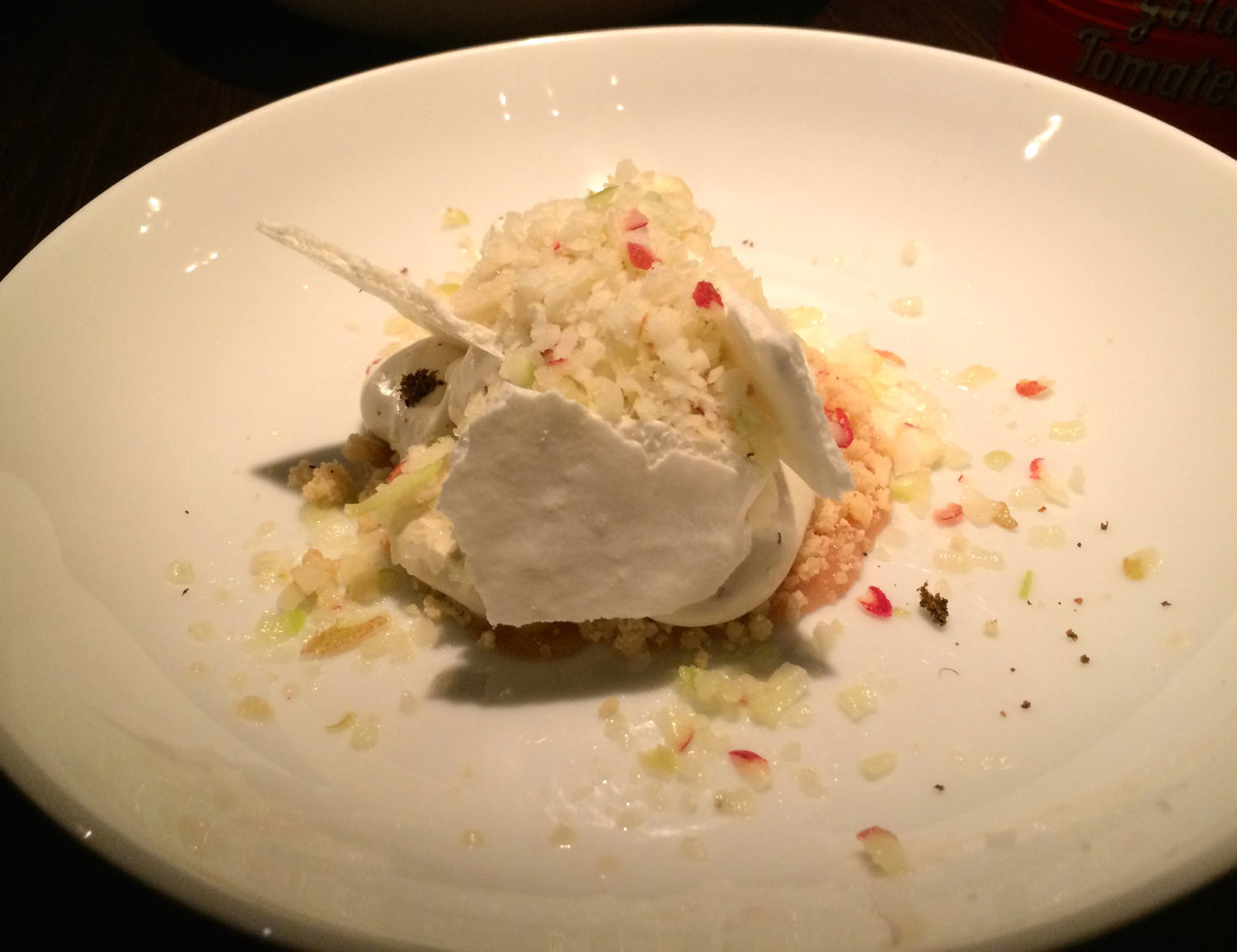TL;DR
Nook offers an appealing concept with Asian-inspired bites and two prix fixe menus, featuring dishes like beef tartare and excellent roast venison. While the stylish decor aims for intimacy, the acoustics create a surprisingly loud atmosphere, especially early in the evening. The food is generally good and reasonably priced, with the venison being a clear standout. If you're looking for a well-executed meal in a less-than-tranquil setting, read on for the full scoop!
Relatively recently opened Nook in Söder (Åsögatan 176) aligns with the trend of upscale neighborhood restaurants emerging in the area. However, Nook presents a simpler and more direct concept, offering Asian-inspired starters/snacks, or a choice between two prix fixe three-course menus priced at 350 and 400 SEK, respectively. All dishes are also available à la carte. The restaurant is managed by Claes Grännsjö, the original owner and chef of the gastro-pub Flying Elk and the now-closed Michelin-starred restaurant Kock & Vin in Gothenburg.
The pricing structure at Nook appears attractive initially. Small dishes and starters are available from 35 SEK, with portion sizes exceeding those typically found in fine-dining establishments. The most expensive item is priced at 265 SEK. However, the menus are designed to be paired with specific wines for each course, potentially adding an additional 300-400 SEK to the three-course experience, depending on beverage selections.
Nook’s stylish and modern website evokes the image of a small, inviting, and somewhat secluded oasis. Situated in the eastern part of Åsögatan, the surrounding area is primarily residential, with limited commercial competition, such as Hjördis. Upon entering, the ambiance felt more akin to a casual venue or a thoughtfully decorated dining room in a private home. Stylish elements, including Montmartre-inspired lighting, expansive, uncovered windows, and soft, ambient lighting, contribute to the atmosphere. However, the absence of curtains, carpets, and other sound-dampening materials results in a notably noisy environment with significant echo. Arriving at approximately 9 pm, the noise level was surprisingly reminiscent of a bustling beer hall rather than a refined dining establishment. Music was absent until 10 pm, at which point the departure of some patrons created a more relaxed and intimate dining atmosphere. Service was pleasant and reasonably attentive, with food arriving after approximately 20 minutes. Notably, Nook does not offer a complimentary bread basket prior to the meal, a detail that is arguably unnecessary given the portion sizes.
Given the fixed-menu format, we opted for one three-course offering from each menu. The menus incorporate both seafood and meat options, which presents both advantages and disadvantages. The advantage lies in the variety offered; however, finding a single wine pairing that complements both is often challenging. A dedicated seafood menu for non-meat eaters is not available. Dishes can be exchanged between diners. From the 350 menu, we sampled the Beef tartare with hazelnuts, hollandaise, pumpkin, kale and Korean chili. The beef tartare itself was flavorful, and the combination with onion and the crisply prepared kale was well-executed. However, an excessive amount of hollandaise sauce detracted from the dish, forming a heavy layer over the tartare. While the rich, buttery sauce contrasted well with the beef, serving it on the side would have been preferable.
From the 400 menu, the seared scallop was, predictably, executed well (scallops are generally a reliable choice). The porcini mushroom complemented the Asian-inspired flavors, which were further enhanced by the creatively prepared noodles that garnished the dish.
The main course from the 350 menu featured Arctic char, crayfish-baked carrot, ginger mayonnaise and lemon. The presentation was classic and refined. The fish exhibited excellent quality, and the lemon provided a pleasant contrast. The recommended white German Riesling (99 SEK / glass) was fresh and floral, pairing well with the dish and enjoyable as a standalone beverage between courses.
The 400 menu included Roast venison, lingonberries, mushrooms from Sörmland, smoked celeriac and five spice – an exceptional dish. From the sauce, derived from the venison and infused with five spice, to the perfectly cut and cooked meat (generously portioned), complemented by a superb celery puree, which compensated for the somewhat lackluster sliced celery, this dish was truly outstanding and likely the highlight of the menu. At 265 SEK when ordered separately, it is well worth the price. The red wine, a 100% Sangiovese from Italy, initially tasted somewhat sharp; however, it paired exceptionally well with the gamey flavor of the venison (115 SEK / glass).
Finally, the menus concluded with Sorbet of autumn apples, green juniper berries, lemon meringue for the 350 menu (fresh, refreshing, and well-received, even by a reviewer with a limited affinity for sweets) and a more conventional “coffee-cake” consisting of Cloudberries, spruce shoots, browned butter and almond for the 400 menu. This dessert was adequate and visually appealing, but not particularly memorable in terms of flavor.
Hjortron, granskott, brynt smör, mandel. Foto: senses.seOverall, the Nook experience was somewhat inconsistent. On one hand, it presents itself as a relatively understated restaurant, which is not necessarily a negative attribute. However, patrons seeking a fine-dining experience may find the noise level, exacerbated by echoing acoustics and boisterous patrons, distracting. Addressing the interior acoustics and implementing subtle background music would be beneficial. The food quality was commendable and reasonably priced, with the Venison dish standing out as a highlight and a recommended selection for visitors.
Missed any part of our series Best Restaurants in Stockholm 2014? See the list here!
